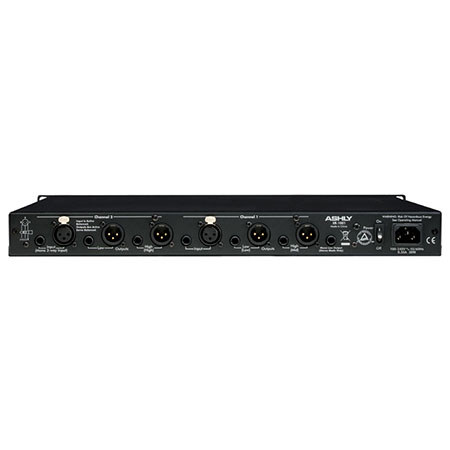
Orders placed during Sukkot (Mon 10/6 after 4PM ET – Wed 10/15) will be shipped Thurs 10/16
View Schedule
Overview
Compare
Specs
Protection
Q&A
Questions & Answers
Shopper : Why Did You Choose This?Brett J : Model recommended by an expert in the audio space. Also liked the availability or xlr inputs and outputs on both sides of the crossover cutoff
Reviews about this item
Review Summary
Ashly Stereo 2-Way, Mono 3-Way Crossover, 1U Rack Space Specifications
Safety/Compliance
cTUVus, CE, FCC, RoHS
Input
20kOhms, Active-Balanced
Max Input Level
+23dBu
Input Level Control
- infinity to +8.5 dB
Damping/Response
2dB - 12dB
Output
100 Ohms, Servo-Balanced
Max Output Level
+23dBu
Output Level Control
-infinity to +15dB
Frequency Response
+/- 0.2dB, 20Hz-20kHz
THD
<0.05% THD (+10dBu, 20Hz-20kHz)
Slew Rate
6V/uS
Output Hum/Noise
<-95dBu, Unweighted (20Hz-20kHz)
Connectors
XLR, 1/4" TRS
Power Requirements
100-240VAC (50-60Hz), 24W
Dimensions (W x H x D)
19.02 x 1.73 x 8.5" / 483 x 44 x 216mm
Weight
8.11lbs / 3.68kg
About Ashly Stereo 2-Way, Mono 3-Way Crossover, 1U Rack Space
The Ashly Stereo 2-Way, Mono 3-Way Crossover is based upon a powerful state-variable filter circuit that assures that the two adjacent frequency band outputs always remain in phase. Conservative design and an unusually thorough procedure for quality control have earned Ashly has reputation for dependability in the recording, sound reinforcement and broadcast fields.
The XR-1001 offers a number of useful features, including continuous tuning, a response control and a unique output stage that maintains low noise at any level setting. The XR-1001 also include a 200:1 tuning range, individual output mute switches and both TRS and XLR connectors. This control adjusts the damping of the filter affecting the response shape of the filters at the crossover point. This helps offset the inaccuracies inherent in typical loudspeakers, thereby helping you to achieve a flat system response. Dial calibrations refer to the amount of attenuation effected by the filter at the crossover frequency, i.e., a setting of 3dB means that the filter's hi-pass and low-pass outputs are each "rolled off 3dB at the crossover point". This describes Butterworth filter response or a gentle 3dB peak at the crossover point when the two filter output signals overlap. To obtain a flat signal or "Linkwitz-Riley" response through the crossover region, set the Response control to "6". This attenuates each output of the filter by 6dB at the crossover point (two identical signals added together yield a +6dB increase). To obtain a notch at the crossover point, turn down the response control past "6" to best suit your needs.
Ashly Stereo 2-Way, Mono 3-Way Crossover, 1U Rack Space Features
- Variable Filter Response Control
- 24dB/octave slope
- Mode switch for stereo 2-way or mono 3-way operation
- Low frequency summed mono output
- +/-10 range switch on both channels
- XLR and 1/4" inputs and outputs
- 20Hz third-order hi-pass filter
- Peak overload warning lights
- Individual level control and mute switch on all outputs
- Active-balanced inputs
- Servo-balanced outputs
- XLR and TRS 1/4" connectors
- Universal 100-240VAC internal power supply
Key Features
- 24dB/octave slope
What's in the box:
- Ashly Stereo 2-Way/ Mono 3-Way Crossover
- Ashly 5 Year Limited Warranty